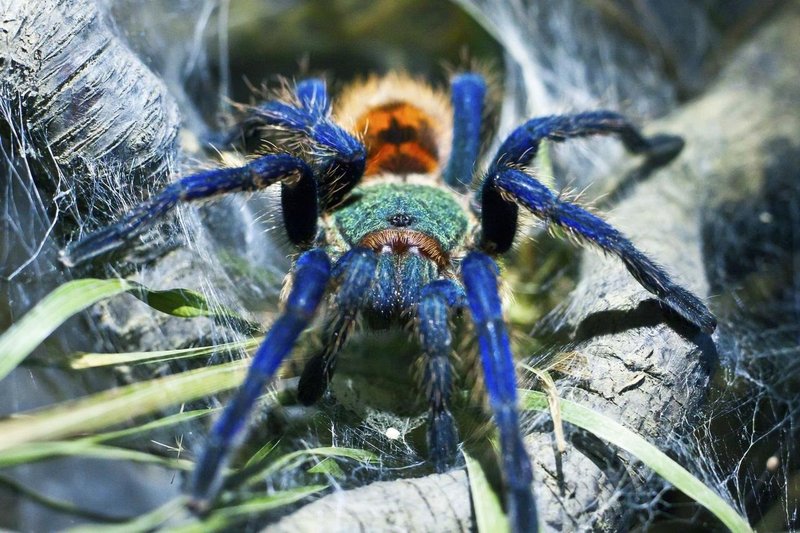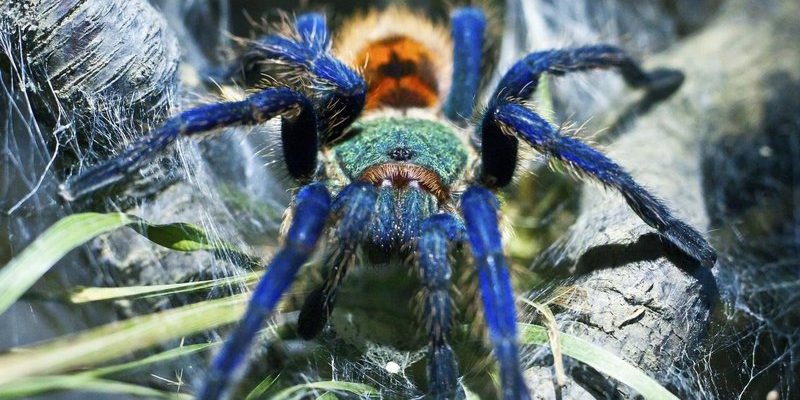
To put it simply, while all tarantulas can bite, the Greenbottle Blue is not typically aggressive toward humans. It prefers to show off its stunning colors rather than get involved in a confrontation. Think of it like a celebrity that enjoys the limelight but isn’t looking to start any drama. However, understanding its behavior, habitat, and potential reactions to threats is crucial if you’re considering one for your collection or just want to know more about these fascinating spiders.
Understanding the Greenbottle Blue Tarantula
The Greenbottle Blue tarantula, scientifically known as *Ceratogyrus marshalli*, is native to the dry regions of West Africa. It’s a burrowing species, often creating silk-lined tunnels in the wild. Because of its vibrant colors, it has become a popular choice among tarantula enthusiasts.
These spiders can grow up to 5–6 inches across, and they live about 10–12 years in captivity. Their diet mainly consists of insects, making them quite low-maintenance as pets. Just make sure to feed them appropriately sized crickets or mealworms, and they’ll be happy campers.
In terms of behavior, the Greenbottle Blue is known to be skittish. They may bolt at the first sign of movement, which is why many experts suggest being gentle and calm when handling them. So, if you plan to interact with one, patience is key!
Do Greenbottle Blue Tarantulas Bite?
Now, let’s get to the heart of the matter: yes, Greenbottle Blue tarantulas can bite. However, it’s essential to understand that biting is usually a last resort. These spiders prefer to flee or display their threats before they resort to using their fangs.
In the event they do bite, most people describe the pain as moderate. It feels similar to a bee sting, and while it may cause localized swelling and redness, serious reactions are rare. Still, it’s wise to treat any bite with care. Wash the affected area with soap and water, and if you experience any severe symptoms, don’t hesitate to seek medical advice.
What Triggers a Bite?
So, you might be wondering what would make a Greenbottle Blue tarantula feel threatened enough to bite. There are a few common triggers:
- Sudden movements: If you approach your spider too quickly, it might interpret that as a threat.
- Handling: Overhandling or mishandling can stress the spider, leading it to bite in self-defense.
- Fear: If it feels cornered or is startled by loud noises, it might react defensively.
Understanding these triggers can help you avoid a potentially painful experience. Most enthusiasts recommend limiting handling unless necessary, as it can stress the spider.
Colorful Defense Mechanisms
One interesting fact about the Greenbottle Blue tarantula is its vibrant colors aren’t just for show. These vivid hues serve as a warning to predators, signaling that this spider isn’t easy prey. When threatened, they have a few tricks up their sleeves:
– Fleeing: In many cases, their first instinct is to run away to safety rather than fight.
– Posturing: They might rise up on their back legs and display their fangs as a warning.
– Hairs: These spiders can also flick urticating hairs at threats, which can cause irritation on the skin or in the eyes.
This natural behavior showcases how even small creatures like tarantulas have evolved unique ways to protect themselves without resorting to biting.
Caring for a Greenbottle Blue Tarantula
If you’ve decided that a Greenbottle Blue tarantula is right for you, congratulations! You’re in for a treat. Caring for them is straightforward, but there are some key points to consider:
1. Habitat: Create a secure terrarium with burrowing space. Use substrate like coconut fiber or peat for them to dig in.
2. Humidity and Temperature: Aim for a humidity level of around 60-70% and keep the temperature between 75-85°F. A small water dish can help maintain the humidity.
3. Feeding: Provide them with appropriately sized insects, and avoid handling them too often to reduce stress.
4. Observation: Spend time watching your tarantula. Each one has its unique personality, and observing its behavior can deepen your connection.
If you follow these care tips, your Greenbottle Blue will thrive and provide hours of wonder.
Final Thoughts on Greenbottle Blue Tarantulas
In conclusion, while the Greenbottle Blue tarantula can bite, they rarely do unless feeling threatened. Their beauty and unique behavior make them fascinating pets, but they also come with their own set of responsibilities. Whether you’re an experienced tarantula keeper or a curious beginner, understanding their nature will go a long way in creating a safe and enjoyable environment.
So, if you’re thinking about adding one of these colorful creatures to your life, remember to approach with respect and care. With the right knowledge and attention, you’ll find that living with a Greenbottle Blue can be a rewarding experience, not just a pretty addition to your home.

